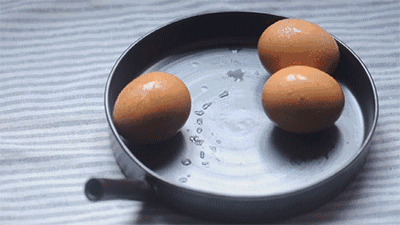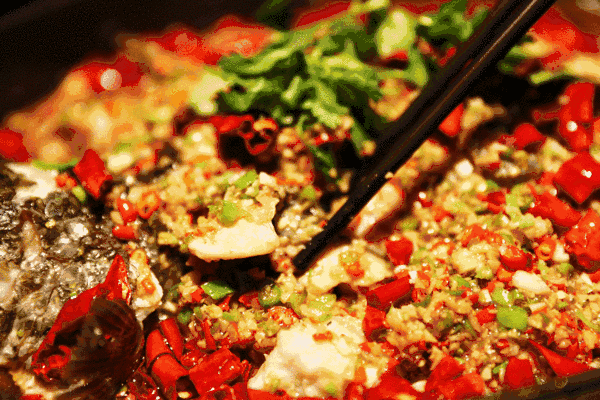
Follow us for more exciting content

The weather is getting cooler, and the autumn feeling is becoming stronger, leading to a sudden increase in colds.
People often think of colds as minor illnesses, so minor that they don’t even need to go to the hospital, and just taking some medicine will suffice. However, there are times when taking medicine does not help, and the condition worsens.
The root cause of this phenomenon is likely due to confusing the differences between Wind-Cold (feng han) and Wind-Heat (feng re) colds, leading to the wrong medication being used. Therefore, you need to keep this chart distinguishing between Wind-Cold and Wind-Heat colds.
Throat itching and throat pain are key points in differentiating between Wind-Cold and Wind-Heat syndromes.
Generally, throat itching indicates Wind-Cold, while throat pain indicates Wind-Heat. However, one must rule out cough caused by dryness, as this type of cough, whether due to warm dryness (feng re zao) or cool dryness (feng han zao), can also present with throat itching symptoms.
The following table clearly distinguishes between Wind-Cold and Wind-Heat syndromes.
Common symptoms of Wind-Cold and Wind-Heat colds
Fever, fear of cold, nasal congestion, runny nose, headache, body aches
Wind-Cold
Fear of cold is predominant, fever is secondary
No sweating
Clear nasal discharge
Throat itching
Heavy cough, shortness of breath, thin white phlegm
No thirst
White tongue coating
Wind-Heat
Fever is predominant, fear of cold is secondary
With sweating
Thick nasal discharge
Throat pain
Frequent and severe cough, difficult to expectorate phlegm, thick/yellow phlegm
Thirsty
Yellow tongue coating
Treatment for the Two Types of Colds
The treatment principles and medications for external Wind-Cold and Wind-Heat differ significantly. Taking medication without distinguishing between cold and heat not only wastes energy and money but can also worsen your condition.
Wind-Cold Cold Disperse Wind, Scatter Cold, Open the Lungs
Common Chinese patent medicines for treating Wind-Cold include Xiao Chai Hu Granules (小柴胡颗粒), Chuan Xiong Cha Tiao San (川芎茶调散), and Huo Xiang Zheng Qi Water (藿香正气水). Taking hot baths, soaking feet, and acupoint massage can also assist in treatment.
Dietary considerations: During a Wind-Cold cold, it is advisable to consume warming foods such as ginger, scallions, and fermented soybeans, while avoiding sour foods like pickled vegetables, vinegar, hawthorn, and cold foods like melons and fruits.
Two Soups to Induce Sweating and Drive Out Cold
① Ginger Sugar Water: Boil ginger slices and scallion whites for 5 minutes, then add an appropriate amount of brown sugar.
② Cilantro and Scallion Soup: Chop cilantro, scallion whites, and a little ginger, place in a pot with an appropriate amount of water, and simmer for 10-15 minutes, then strain and drink the liquid.

Wind-Heat Cold Disperse Wind, Clear Heat, Soothe the Lungs
Common Chinese patent medicines for treating Wind-Heat include Yin Qiao San (银翘散), Sang Ju Yin (桑菊饮), Shuang Huang Lian Oral Liquid (双黄连口服液), and Ban Lan Gen Granules (板蓝根颗粒).
Patients with external Wind-Heat should drink plenty of water and consume a light diet, favoring cooling foods such as cabbage, white radish, pears, and oranges, while avoiding hot foods like scallions, ginger, garlic, chili, leeks, jujubes, and apricots.
Two Dietary Remedies Suitable for Wind-Heat Colds
① Fritillaria and Codonopsis Steamed Pear: Take one pear, peel and core it, fill it with an appropriate amount of fritillaria, codonopsis, mint, and rock sugar, place in a bowl with water, and steam until cooked. Eat in the morning and evening for several days.
This remedy moistens dryness, stops cough, and transforms phlegm, especially suitable for the elderly and children with cough, dry throat, and constipation caused by external Wind-Heat.
② Mulberry Leaf and Chrysanthemum Mint Drink: Use equal amounts of mulberry leaves, chrysanthemum, mint, and bamboo leaves, boil with water, and sweeten with honey to quickly relieve symptoms like fever and headache.

 What to Eat After a Cold to Recover Faster
What to Eat After a Cold to Recover Faster
Every patient with a cold hopes to recover quickly. During the cold, in addition to taking medicine and getting injections on time, it is also important to avoid certain foods that can prolong the duration of the cold.
1. Eggs
It is best not to eat too many eggs after catching a cold, as the rich nutrients in eggs can burden the body if consumed excessively. Additionally, the yolk contains a high amount of cholesterol, which is not conducive to recovery from a cold. Generally, one egg per day is sufficient for a cold patient.

2. Spicy Foods
Spicy and stimulating foods can increase appetite but may also trigger coughing. If one does not take care of their throat, even if the cold improves, the cough may persist.

3. Greasy Foods
During a cold, greasy foods should also be avoided. While it is necessary to consume a certain amount of high-protein foods, greasy foods should be avoided during a cold.
The cold season is also a peak period for the misuse of antibiotics, as people tend to reach for antibiotics at the first sign of symptoms like a runny nose or sore throat.
However, the use of antibiotics requires careful consideration, and it is essential to follow medical advice!




